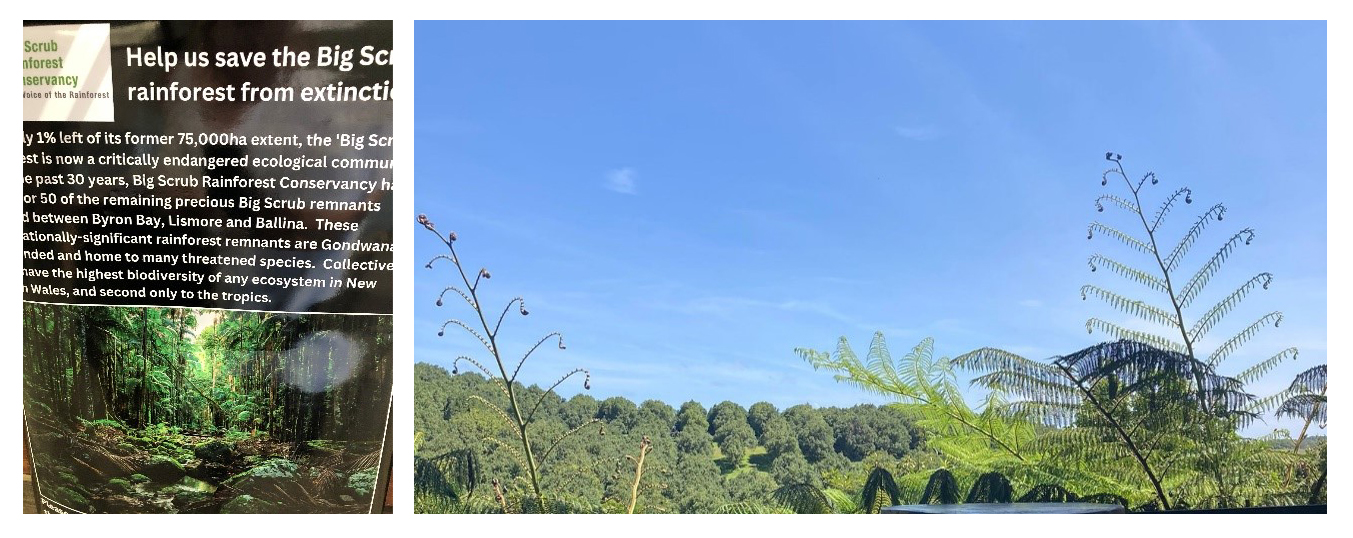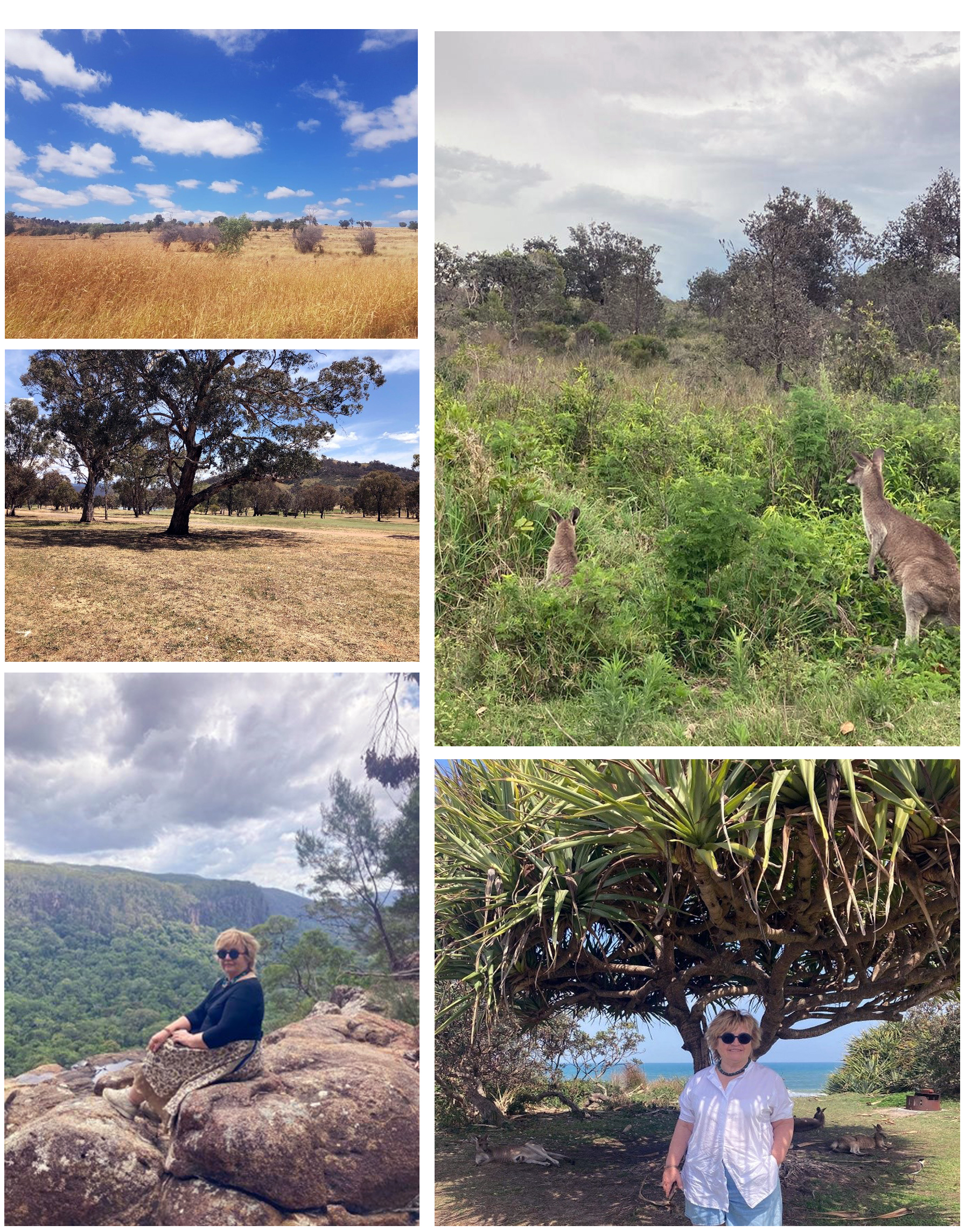Prof. dr hab. Katarzyna Dąbrowska – Zielińska – AUSTRALIA
.jpg)
During my six-week stay in Australia, I visited places related to my PhD work at the Australian National University, which cooperated with CSIRO (Commonwealth Scientific and Industrial Research Organization). CSIRO is Australia's national scientific organization and one of the largest and most diverse research institutes in the world. The research conducted there focuses on the challenges facing the country. The CSIRO research station with lysimetric evapotranspiration and aerodynamic measurements, where I performed remote sensing measurements and processed measurements from NOAA AVHRR satellites, was located 300 km from Canberra, in an area of eucalyptus forests. The station no longer exists, and the area has been taken over by vegetation encroaching on every available space.
.jpg) Dr. Alex Held – Aqua Watch Mission Leader
Dr. Alex Held – Aqua Watch Mission Leader

 As part of the Aqua Watch Mission, information from hyperspectral optical satellite sensors and in-situ sensors, together with data analysis and artificial intelligence, creates an integrated system ensuring accurate monitoring and forecasting of water quality. The recording sensors will be optimized for high-resolution monitoring of inland and coastal waters. Due to the procedures regarding Australia's cooperation with Europe, participation in Horizon requires the consent of the European Commission, while research institutes can participate in global projects where there are no restrictions on the participation of countries, e.g. the well-known Water4All program (CT) or joint participation in an ERC scientific project.< /p>
As part of the Aqua Watch Mission, information from hyperspectral optical satellite sensors and in-situ sensors, together with data analysis and artificial intelligence, creates an integrated system ensuring accurate monitoring and forecasting of water quality. The recording sensors will be optimized for high-resolution monitoring of inland and coastal waters. Due to the procedures regarding Australia's cooperation with Europe, participation in Horizon requires the consent of the European Commission, while research institutes can participate in global projects where there are no restrictions on the participation of countries, e.g. the well-known Water4All program (CT) or joint participation in an ERC scientific project.< /p>
 In Sydney, I met with Professor Andrew Skidmore, a world-renowned scientist who is currently implementing the ERC BIOSPACE project, where he is developing a fundamentally different approach to monitoring biodiversity on Earth, combining modern remote satellite research with environmental DNA (eDNA) profiling.
In Sydney, I met with Professor Andrew Skidmore, a world-renowned scientist who is currently implementing the ERC BIOSPACE project, where he is developing a fundamentally different approach to monitoring biodiversity on Earth, combining modern remote satellite research with environmental DNA (eDNA) profiling.
Prof. A. Skidmore founded the concept that DNA of species obtained from environmental samples on a local scale, combined with remote methods, will allow understanding the abundance and changes in biodiversity on a regional and, ultimately, global scale, resulting in the development of biodiversity modeling. It is known that the global loss of biodiversity is increasing and the issue of biodiversity is a key issue for the world. Prof. Andrew Skidmore works at the University of Twente in the Netherlands and Macquarie University in Sydney, and is open to cooperation in international projects.
I also had the opportunity to meet Prof. Willem Vervoort, a leading hydrologist at the University of Sydney and an expert in quantitative hydrology and catchment management. He serves as the Director of the ARC Training Center in Data Analytics for Resources and Environments (DARE). His main research area is the development of sustainable water management in the context of a changing climate, where he uses long-term cooperation with agricultural research and agri-food production. It is open to scientific cooperation and inclusion of joint research and results in the field of hydrology in a future ERC grant.

Australia is currently undergoing the 20 Million Trees Program, launched in 2014 to re-establish green corridors and threatened ecological areas. This program supports native species, working with local communities and contributing to carbon sequestration in Australia. The tree planting program in large areas converted from forest to pasture has established 29,508,062 trees and 4,061,837 understory plants across 235 projects. Over million was allocated for implementation.
The Australian Government will continue to invest in habitat rehabilitation and reforestation activities under the National Landcare Program.
 The plant communities are dominated by flora typical of dry and hot climates. The interior of the continent is occupied by sandy deserts (without vegetation) and semi-deserts with saltbush and thorny shrubs (dwarf acacias, eucalyptus, casuarinas, etc. The deserts and semi-deserts border, especially in the north, with steppes of sclerophyllous grasses. In the north, the steppes turn into savannas, and these - in monsoon forests. The south-east and south-west coasts are covered with laurel forests and evergreen thickets. The vegetation of the eastern part of Australia, where I stayed, is distinct: in areas with high rainfall (north-eastern part) there are evergreen equatorial forests ( fig trees, pandanus palms, lianas and epiphytes), and further south, in the mountains, there are evergreen forests of araucaria and beech trees, and on the highest elevations of the Australian Alps - alpine vegetation. The economic scourge of Australia is the multiplying prickly pears imported here.
The plant communities are dominated by flora typical of dry and hot climates. The interior of the continent is occupied by sandy deserts (without vegetation) and semi-deserts with saltbush and thorny shrubs (dwarf acacias, eucalyptus, casuarinas, etc. The deserts and semi-deserts border, especially in the north, with steppes of sclerophyllous grasses. In the north, the steppes turn into savannas, and these - in monsoon forests. The south-east and south-west coasts are covered with laurel forests and evergreen thickets. The vegetation of the eastern part of Australia, where I stayed, is distinct: in areas with high rainfall (north-eastern part) there are evergreen equatorial forests ( fig trees, pandanus palms, lianas and epiphytes), and further south, in the mountains, there are evergreen forests of araucaria and beech trees, and on the highest elevations of the Australian Alps - alpine vegetation. The economic scourge of Australia is the multiplying prickly pears imported here.

